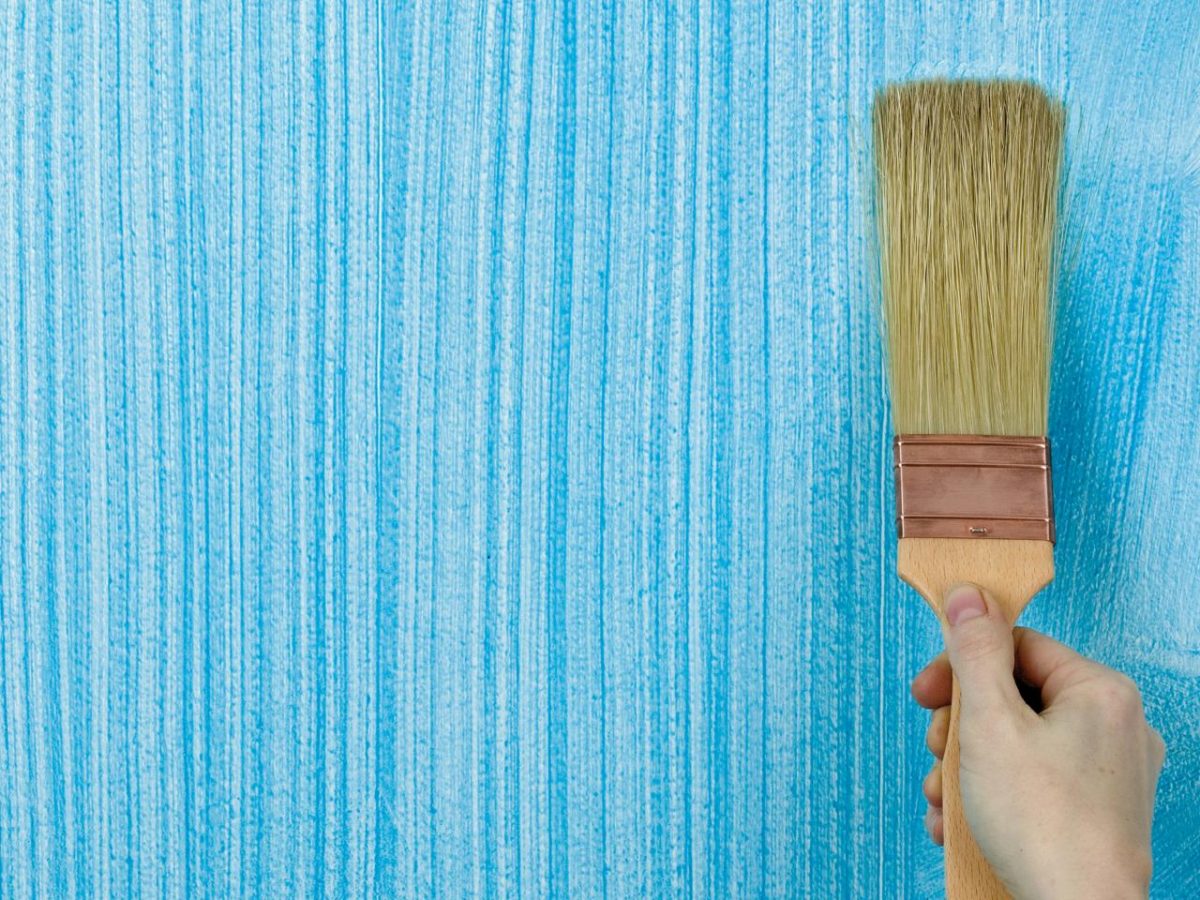DIY home painting guide from a to z: from the choice of colors to the type of paint to choose, from the painting techniques to the expected costs and materials, recommended tools for painting.
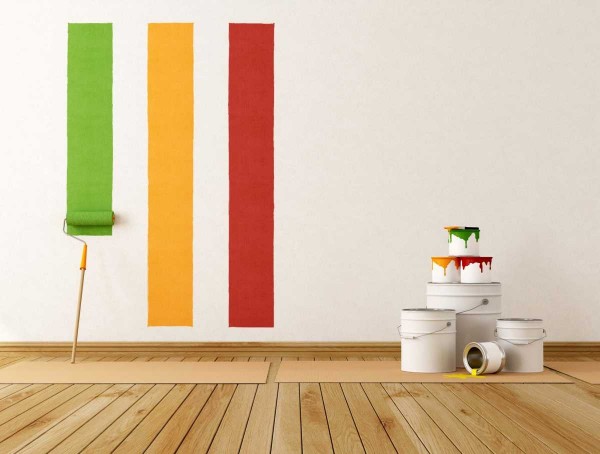
Those who want to refresh the house walls opting for the do-it-yourself, must examine in advance a whole series of factors: choice of colors, techniques and effects, as well as materials and costs.
When to paint the house
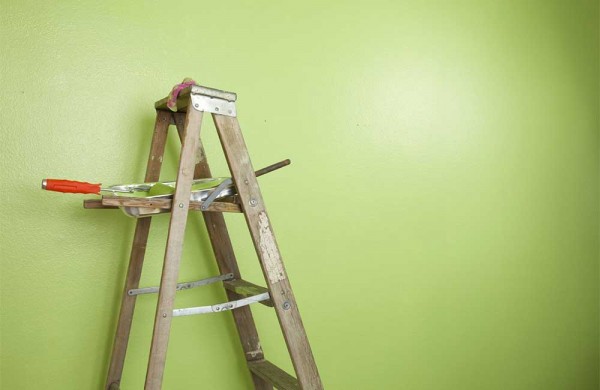
Painting house using the do-it-yourself it is an operation that takes time but can be carried out by anyone with good will and desire to personally contribute to renovating the interior of their home.
Let’s start by pointing out that the ideal period for painting house it’s less humid seasons and therefore the spring and thesummer.
The reason is obvious: it is better to avoid the rainy months that certainly do not favor one sudden drying of the paint on the walls.
Regarding the frequency with which whitenand home, there is no rule to follow but it is easy to evaluate when it becomes necessary.
Read also: Tool shed
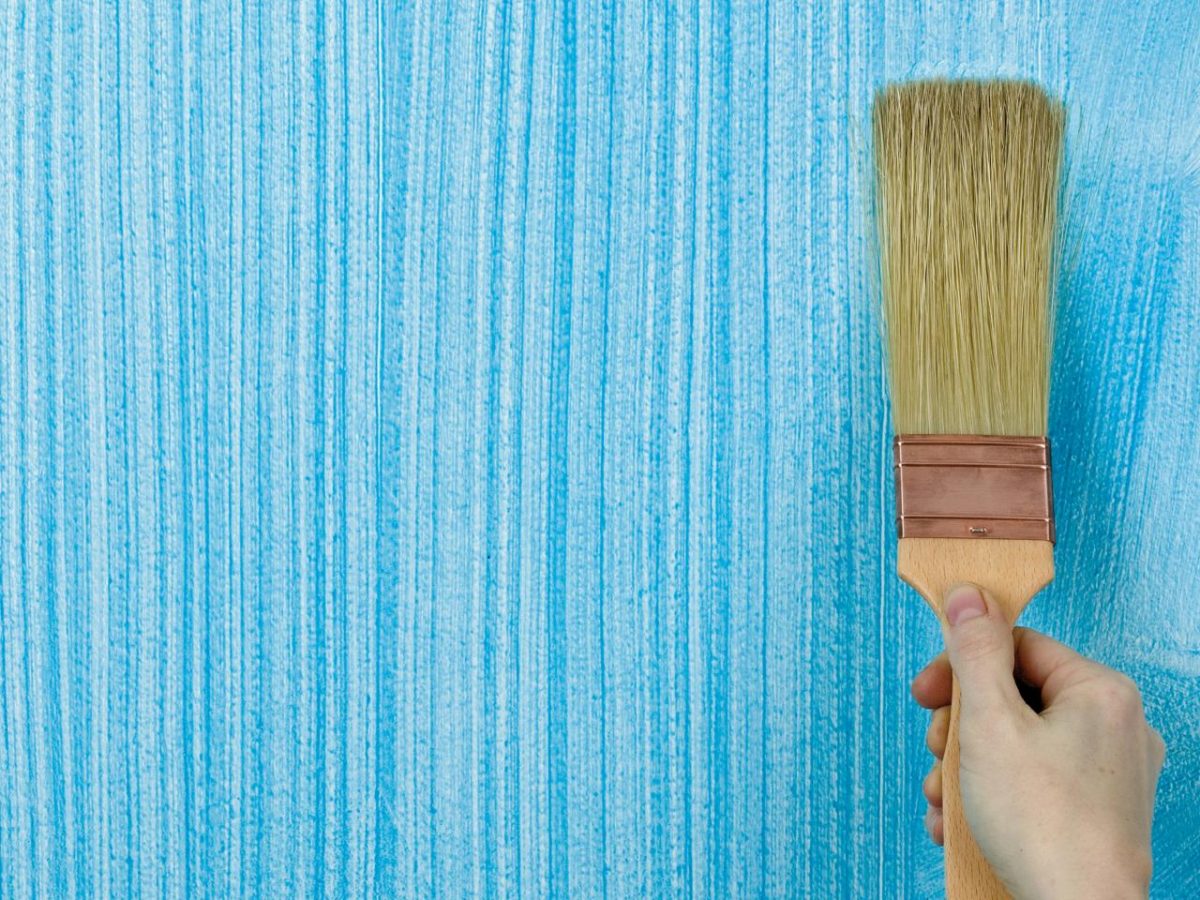
Dirty environments and walls, yellow with traces of damp, are the alarm bell to proceed to painting.
In general, just to give a deadline, it is advisable to renovate the walls of the house at least every 5 years.
Home painting: tools and materials
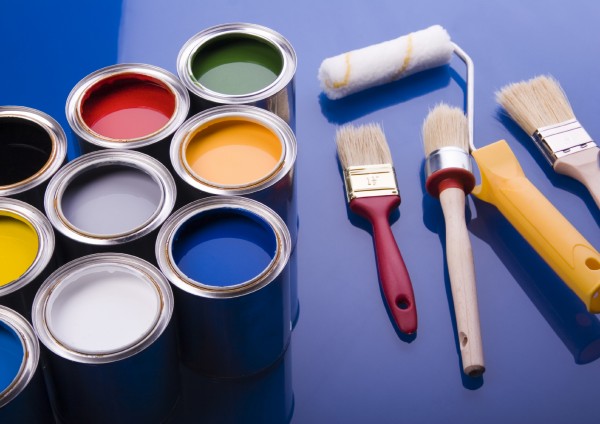
Before painting house it is necessary to find a whole series of gear, including scrapers, sponges, brushes, spatulas, sandpaper, brushes of various sizes, buckets, paint.
Of course, you must also buy special plastic sheets so as not to dirty the furniture and the floor.
Paper scotch tape is also useful, convenient because they are easily removed, to protect electrical sockets and to be placed around doors and windows, thus avoiding staining them with paint.
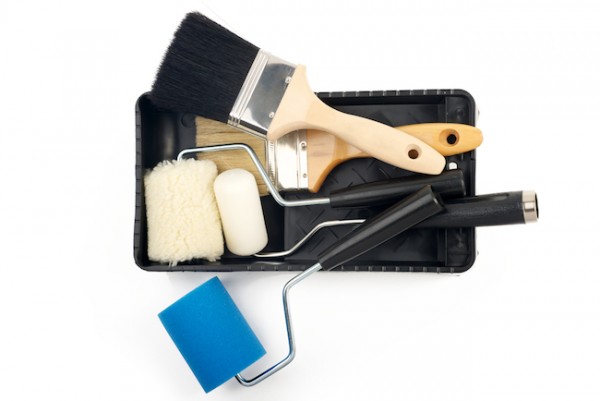
The roller, convenient tool for painting perhaps less precise but which will take less time.
Types of paints

You may be interested in: How to create chalkboard paint: ideas for the walls of the house
As for the paints, the choice is between washable water-based paints, the most common and most used today, breathable paints, tempera paints and acrylic paints.
WATER-BASED PAINT or WASHABLE PAINT
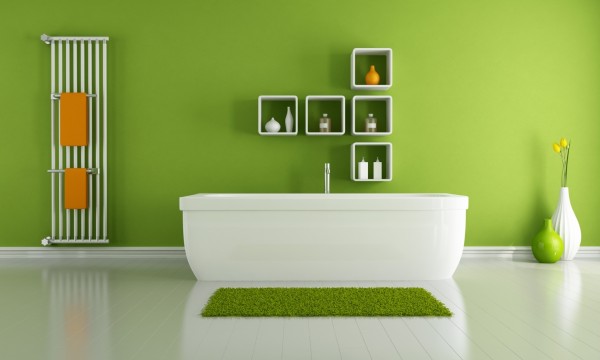
L’water-based paint it is preferred as it is non-toxic, breathable is washable. An ideal choice for any environment.
By washable we mean a paint with closed pores, therefore resistant abrasion of small rubbing due to cleaning any dirt stains.
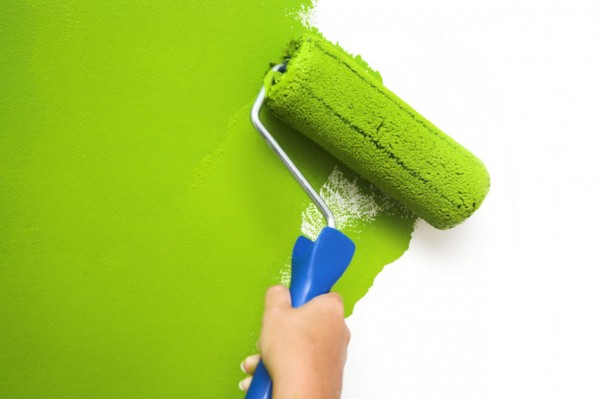
Do you want design advice on how to furnish? Join the group
Unlike what one might think, it is advisable to clean the stains “dry”, not wet, as this could cause damage to the paint.
On the market it is possible to buy washable paints rather cheap, but often with a poor whiteness and yellowing over time, with a mediocre yield and poor abrasion resistance, or super washable paints with excellent abrasion resistance, bright white point and an almost silky effect to the touch.
BREATHABLE and ANTI-MOLD PAINT
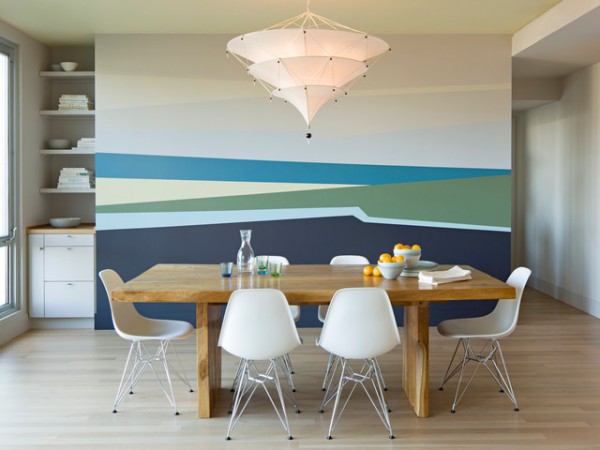
This type of paint is widely used in environments where condensation is created, such as kitchen and the bathroom, as it is perfect for letting the walls transpire, allowing the air, which normally forms inside, to pass through.
The latter usually have additional products antibacterial, water repellent is resistant to mold.
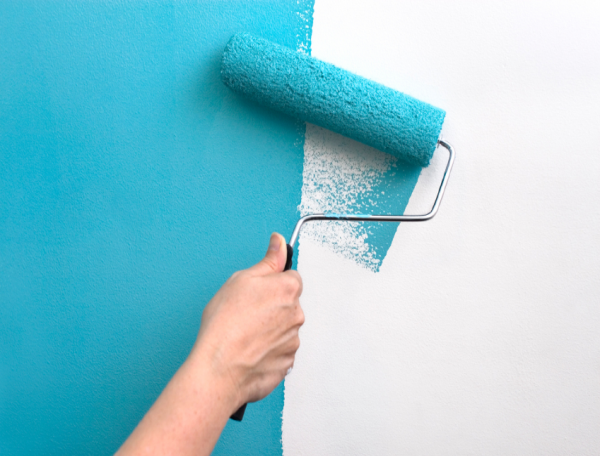
The anti-mold paints they are composed of hollow glass micro spheres that allow to keep the cold walls at a temperature that feels slightly warmer to the touch, this to ensure that there is no thermal shock between hot air and cold walls, which causes condensation to form.
There are on the market breathable paints generic, some have only the function of being “slightly” breathable, others, more expensive and of the highest quality, guarantee good resistance and yield.
TEMPERA PAINTING
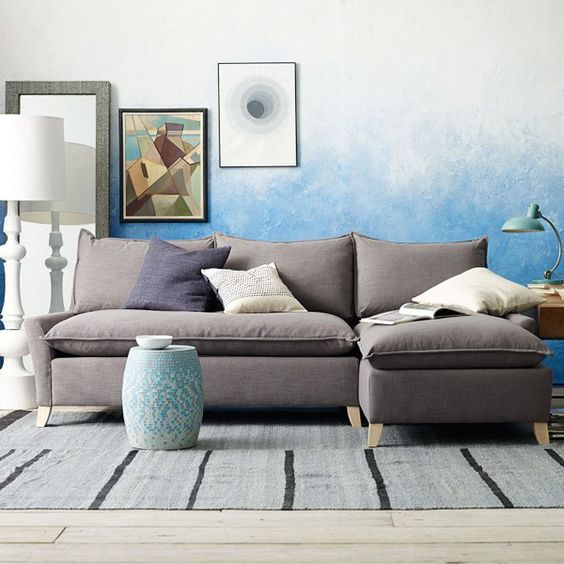
There tempera painting, also called dyed with glue (as it is formed by a binder of animal or vegetable glue that binds the gypsum with water and any pigments), it is less expensive in terms of costs but guarantees a shorter duration than water-based paint, and therefore to be chosen for spaces that are They “live” less, such as closets and cellars, and in any case it is not recommended to paint the exteriors, as it is not a washable paint.
It should be emphasized that these paints, given their composition which is not resistant to humidity, favor the development of mold.
Furthermore, over time, they tend to crumble, so to remedy the problem it is advisable to apply on the wall, before painting, a product fixative.
ACRYLIC PAINT
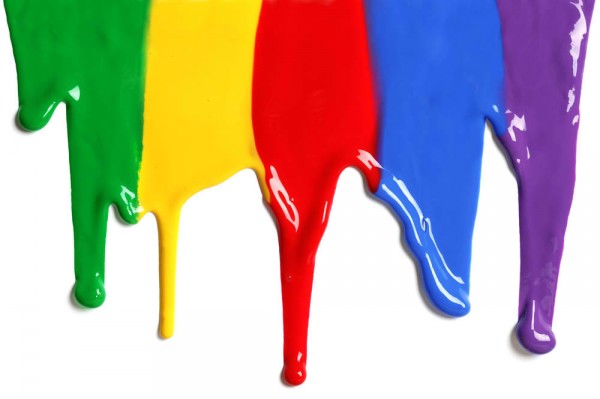
The acrylic paints they are a further option for those who want to obtain good results on condition that they have to “bear” a particularly intense odor (even if today there are odorless acrylic paints on the market).
There acrylic paint it is suitable for different types of surfaces, in particular for covering plasters, metals and wood in a perfect way.
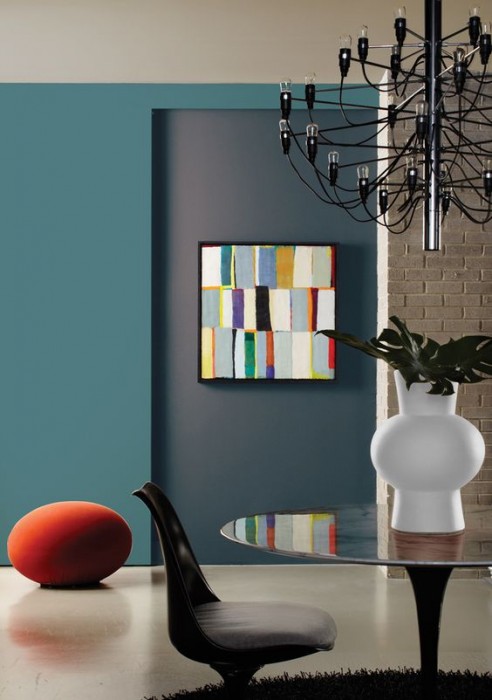
It’s about a water-soluble paint, suitable for both indoor and outdoor environments, where its pigments (titanium oxide, lime or gypsum) guarantee excellent yield and high hiding power.
MATTE, PATINATED AND SATIN PAINTS

Before purchasing the painting it is necessary to examine the degree of gloss to want to give to the environment.
In this regard, the choice falls between matt, patinated paints or satin.
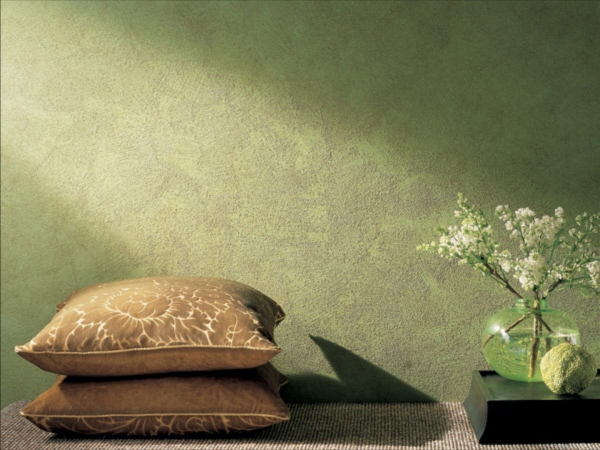
Once you have decided on the type of paint, you just have to calculate how much you need.
It is sufficient to simply add the surface in square meters of all the rooms and check on the package how many square meters can be painted.
Tips for choosing colors
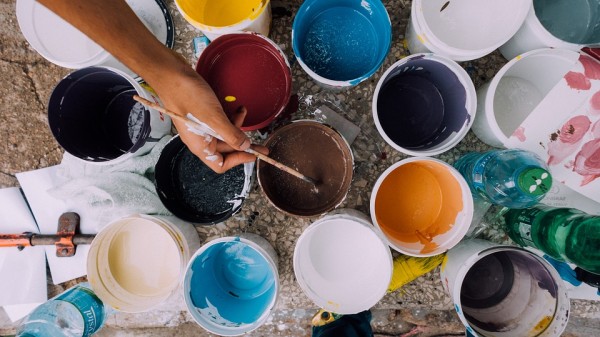
The choice of colors it is of course subjective and also depends on the environments and on what effects you want to obtain.
With the right color gradations it is possible to influence some aspects, such as the brightness.
It is then necessary to decide whether to use a single color for the whole house, different colors for each room or different colors for the walls of the same room.
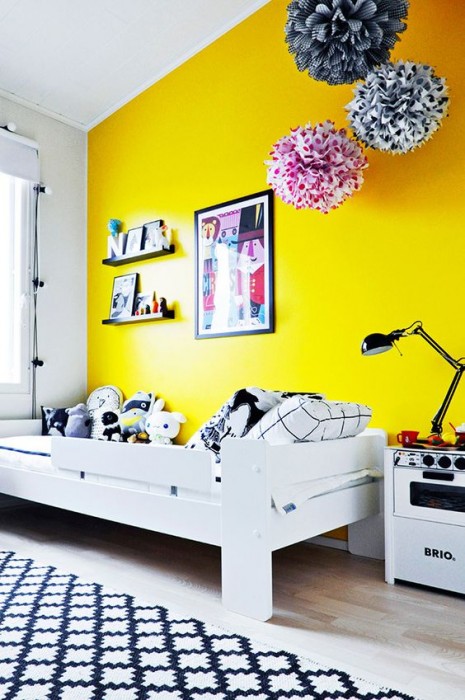
As for the influence of colors on moods it is useful to know that:
- Pink and yellow are relaxing;
- Green and blue recall expressions of tranquility and peace;
- Red, yellow and orange express energy and joy;
- White is an expression of brightness and cleanliness.
To learn more about the topic, we recommend reading our in-depth guide on colors for painting walls.
Painting techniques to paint the walls
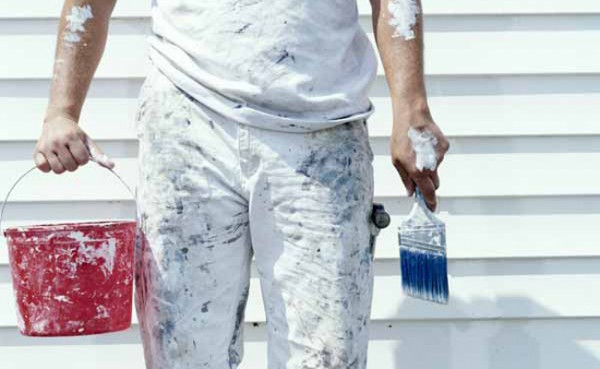
There are many painting techniques to personalize your home, capable of creating and conferring a series of “special effects“To the interiors.
Let’s discover the most popular.
SPATULATE
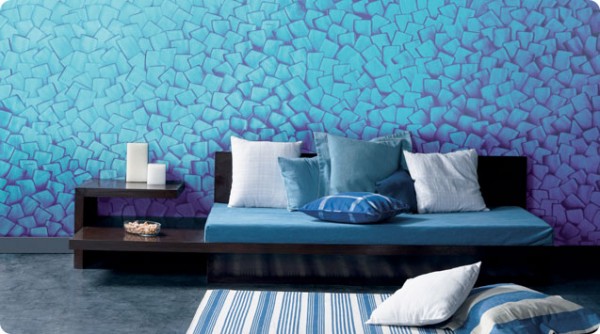
It is a technique that allows to obtain glossy walls and smooth. It is necessary to use special paints that are applied using a plastic spatula.
Usually two coats are needed to obtain an optimal final result, bearing in mind that the application of the paint is done by crossing the spatula strokes.
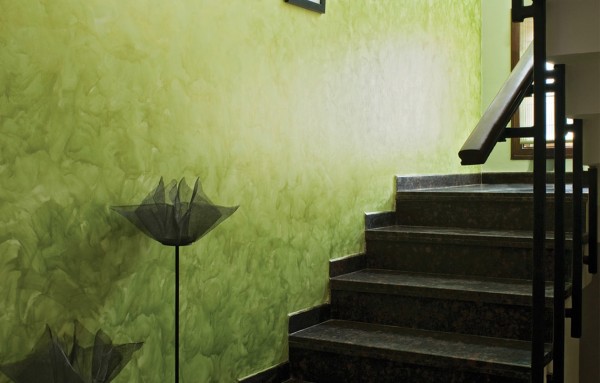
In practice, the movements alternate, once proceeding upwards and once downwards, once to the right and another to the left.
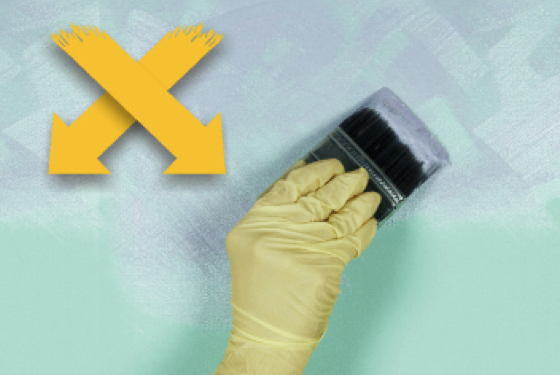
After the color has dried, we move on to smoothing using a sandpaper, eliminating the dust escaping with a damp cloth and finally proceeding to the wax polishing with a wool fabric.
Let’s see some examples of spatula:
SPONGE
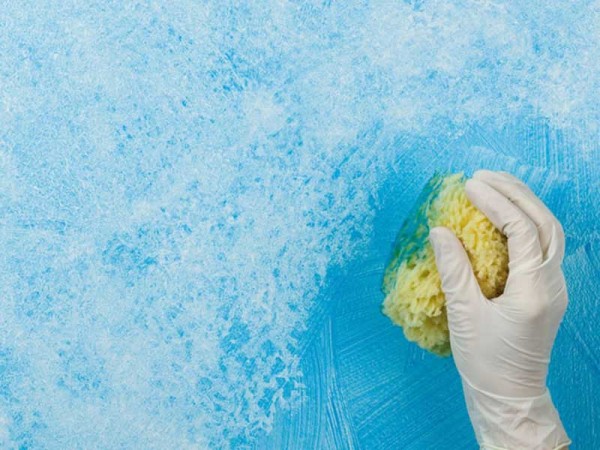
A technique that involves dab the area with a sponge after having been soaked in paint, with a color slightly or totally different from that used for the base.
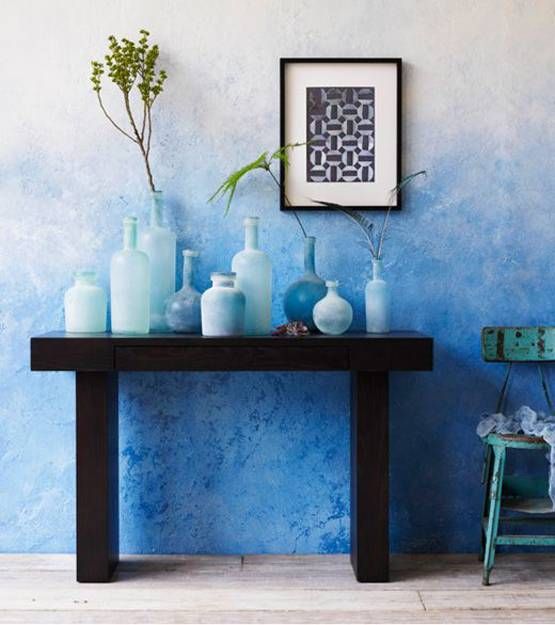
The aesthetic result is of particular visual impact, with the further advantage of being able to resize any defects found on the surface of the walls.
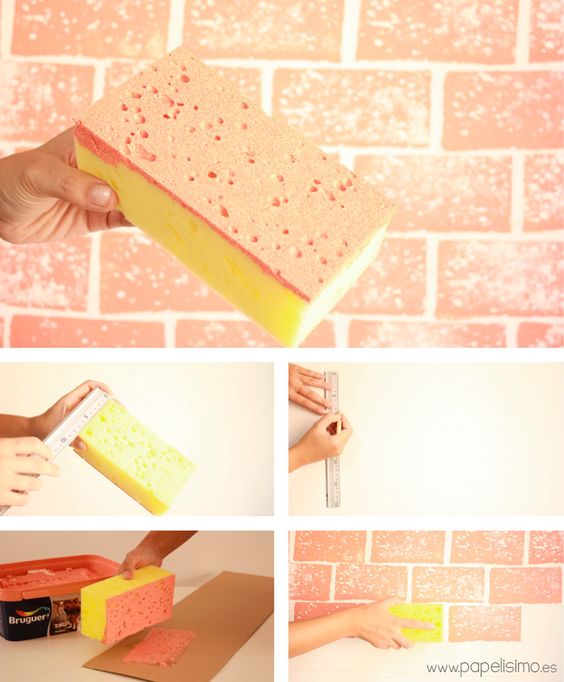
On the market there are sponges that give particular and original effects, such as the brick effect.
Let’s see some examples of sponged:
ANTIQUE STUCCO OR VENETIAN STUCCO
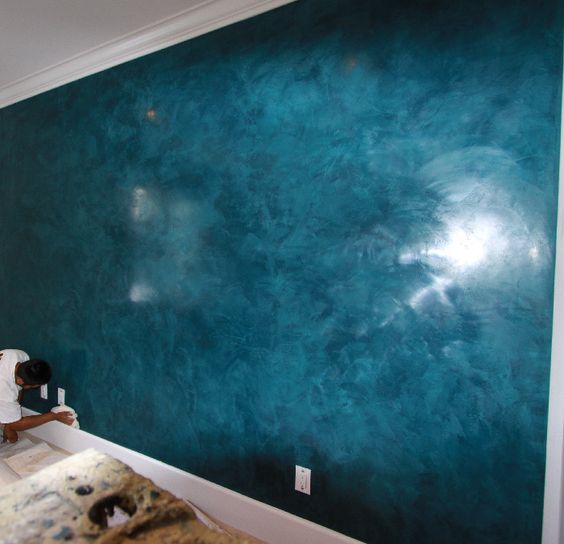
The antique stucco (Venetian) is made by expert masters using a spatula with a certain number of layers.
Here we deal with do-it-yourself and therefore with effects achieved even with only a single layer.
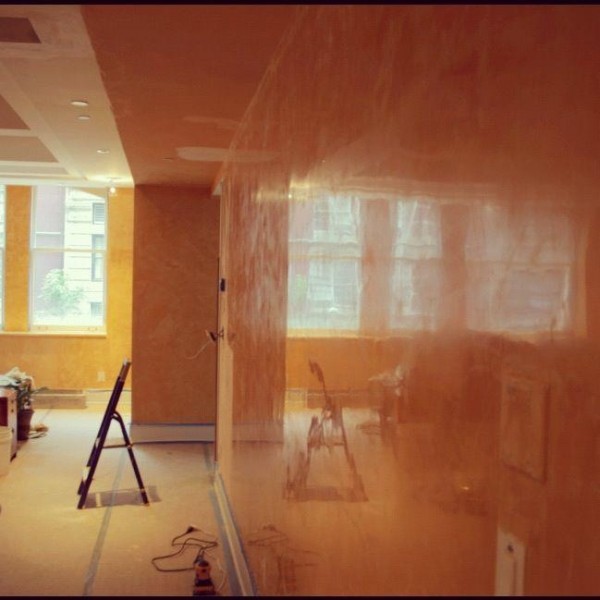
The stucco they are sold ready to use and to be applied on the walls both with spatulas that with brush.
In this way it will be possible to reproduce in your home environments dating back to past eras, such as the unforgettable Renaissance period.
Let’s see some examples of Venetian plaster:
VEILED
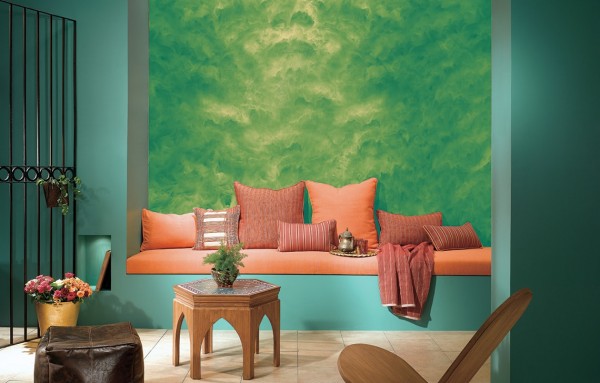
Create a veiled effect it’s not complicated. It is necessary to use a veil of color on a previously perfectly whitewashed wall, with the aim of not obscuring the background color.
A sort of “I see and I don’t see”, precisely a transparency.

To spread the veil of paint it is possible to use a roller, a sponge or a spatula, depending on the effect you want to achieve.
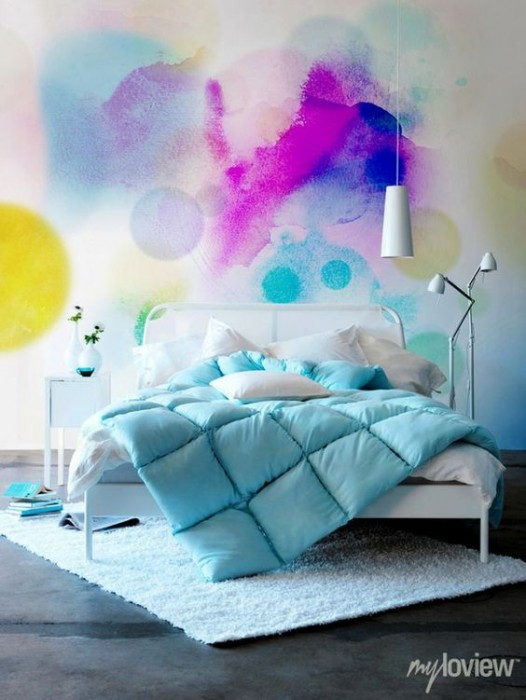
Let’s see some examples of veiled:
SCRATCHED
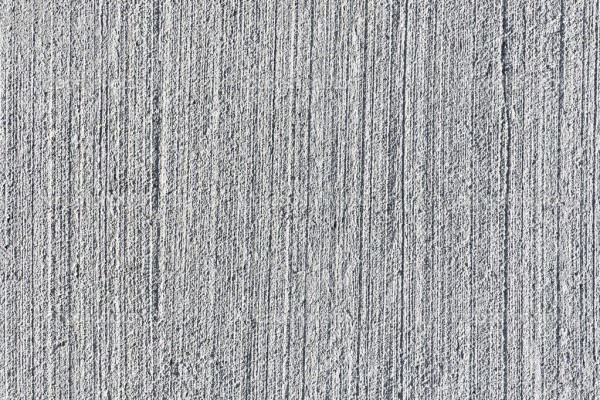
To get that particular effect, an aggregate composed of synthetic resins in a mixture of water is used.
The compound is applied using a particular tool, the metal trowel.
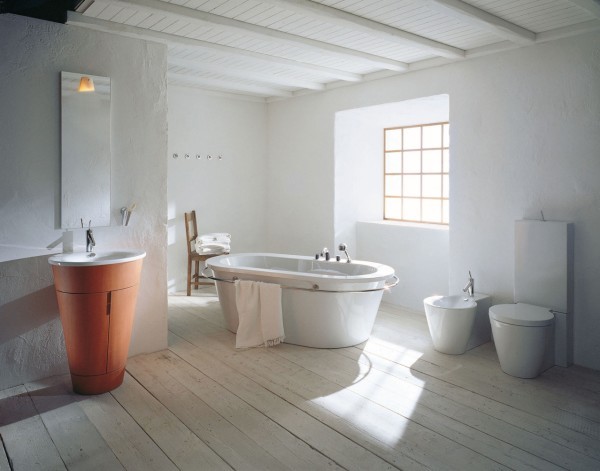
After whitening the wall, before it dries, thescratched effect using a plastic trowel, to be molded on the walls according to the desired result (in a straight line, diagonal or rounded movement).
Let’s see some example of scratched:
BUFFED
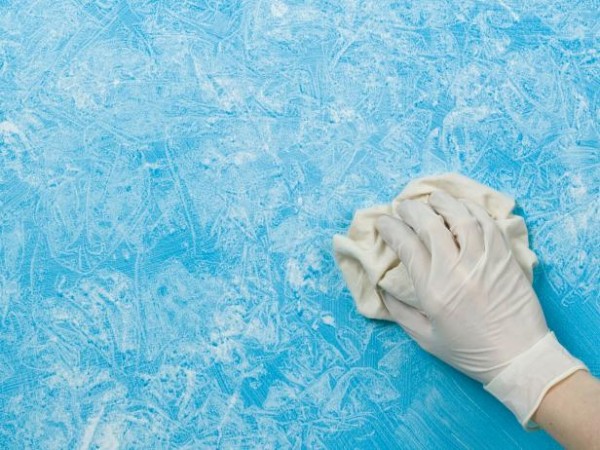
A technique of painting which is to use a deerskin pad.
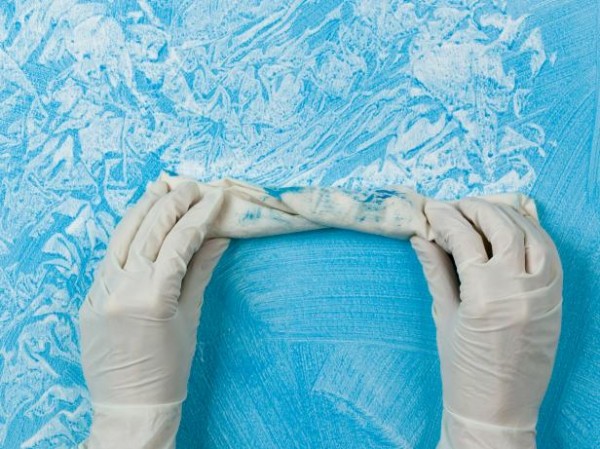
You have to dip it in the paint and place it repeatedly on the wall several times, drawing inspiration from your own imagination. The result will be truly original.
Home painting: what are the costs?
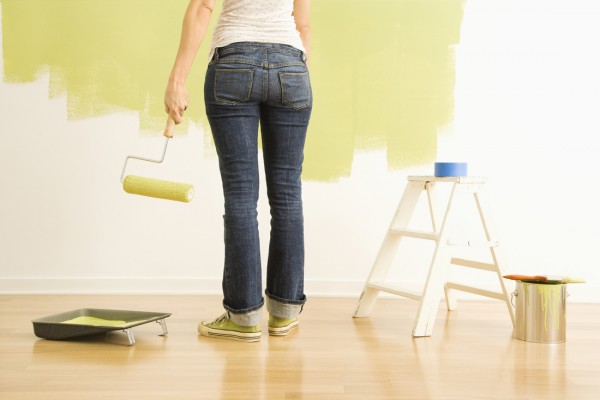
THE costs to paint the house they are different depending on the type and quality of the products you want to use for your environments, as well as for the techniques and effects you want to give to the walls.
Approximately for a house of 100 square meters, opting for the do-it-yourself, with the purchase of medium quality materials and tools, the cost is around 500 euros.
Photos: original ideas for painting the walls of the house
DIY home painting guide from a to z: from the choice of colors to the type of paint to choose, from the painting techniques to the expected costs and materials, recommended tools for painting.

Those who want to refresh the house walls opting for the do-it-yourself, must examine in advance a whole series of factors: choice of colors, techniques and effects, as well as materials and costs.
When to paint the house

Painting house using the do-it-yourself it is an operation that takes time but can be carried out by anyone with good will and desire to personally contribute to renovating the interior of their home.
Let’s start by pointing out that the ideal period for painting house it’s less humid seasons and therefore the spring and thesummer.
The reason is obvious: it is better to avoid the rainy months that certainly do not favor one sudden drying of the paint on the walls.
Regarding the frequency with which whitenand home, there is no rule to follow but it is easy to evaluate when it becomes necessary.
Read also: Tool shed

Dirty environments and walls, yellow with traces of damp, are the alarm bell to proceed to painting.
In general, just to give a deadline, it is advisable to renovate the walls of the house at least every 5 years.
Home painting: tools and materials

Before painting house it is necessary to find a whole series of gear, including scrapers, sponges, brushes, spatulas, sandpaper, brushes of various sizes, buckets, paint.
Of course, you must also buy special plastic sheets so as not to dirty the furniture and the floor.
Paper scotch tape is also useful, convenient because they are easily removed, to protect electrical sockets and to be placed around doors and windows, thus avoiding staining them with paint.

The roller, convenient tool for painting perhaps less precise but which will take less time.
Types of paints

You may be interested in: How to create chalkboard paint: ideas for the walls of the house
As for the paints, the choice is between washable water-based paints, the most common and most used today, breathable paints, tempera paints and acrylic paints.
WATER-BASED PAINT or WASHABLE PAINT

L’water-based paint it is preferred as it is non-toxic, breathable is washable. An ideal choice for any environment.
By washable we mean a paint with closed pores, therefore resistant abrasion of small rubbing due to cleaning any dirt stains.

Do you want design advice on how to furnish? Join the group
Unlike what one might think, it is advisable to clean the stains “dry”, not wet, as this could cause damage to the paint.
On the market it is possible to buy washable paints rather cheap, but often with a poor whiteness and yellowing over time, with a mediocre yield and poor abrasion resistance, or super washable paints with excellent abrasion resistance, bright white point and an almost silky effect to the touch.
BREATHABLE and ANTI-MOLD PAINT

This type of paint is widely used in environments where condensation is created, such as kitchen and the bathroom, as it is perfect for letting the walls transpire, allowing the air, which normally forms inside, to pass through.
The latter usually have additional products antibacterial, water repellent is resistant to mold.

The anti-mold paints they are composed of hollow glass micro spheres that allow to keep the cold walls at a temperature that feels slightly warmer to the touch, this to ensure that there is no thermal shock between hot air and cold walls, which causes condensation to form.
There are on the market breathable paints generic, some have only the function of being “slightly” breathable, others, more expensive and of the highest quality, guarantee good resistance and yield.
TEMPERA PAINTING

There tempera painting, also called dyed with glue (as it is formed by a binder of animal or vegetable glue that binds the gypsum with water and any pigments), it is less expensive in terms of costs but guarantees a shorter duration than water-based paint, and therefore to be chosen for spaces that are They “live” less, such as closets and cellars, and in any case it is not recommended to paint the exteriors, as it is not a washable paint.
It should be emphasized that these paints, given their composition which is not resistant to humidity, favor the development of mold.
Furthermore, over time, they tend to crumble, so to remedy the problem it is advisable to apply on the wall, before painting, a product fixative.
ACRYLIC PAINT

The acrylic paints they are a further option for those who want to obtain good results on condition that they have to “bear” a particularly intense odor (even if today there are odorless acrylic paints on the market).
There acrylic paint it is suitable for different types of surfaces, in particular for covering plasters, metals and wood in a perfect way.

It’s about a water-soluble paint, suitable for both indoor and outdoor environments, where its pigments (titanium oxide, lime or gypsum) guarantee excellent yield and high hiding power.
MATTE, PATINATED AND SATIN PAINTS

Before purchasing the painting it is necessary to examine the degree of gloss to want to give to the environment.
In this regard, the choice falls between matt, patinated paints or satin.

Once you have decided on the type of paint, you just have to calculate how much you need.
It is sufficient to simply add the surface in square meters of all the rooms and check on the package how many square meters can be painted.
Tips for choosing colors

The choice of colors it is of course subjective and also depends on the environments and on what effects you want to obtain.
With the right color gradations it is possible to influence some aspects, such as the brightness.
It is then necessary to decide whether to use a single color for the whole house, different colors for each room or different colors for the walls of the same room.

As for the influence of colors on moods it is useful to know that:
- Pink and yellow are relaxing;
- Green and blue recall expressions of tranquility and peace;
- Red, yellow and orange express energy and joy;
- White is an expression of brightness and cleanliness.
To learn more about the topic, we recommend reading our in-depth guide on colors for painting walls.
Painting techniques to paint the walls

There are many painting techniques to personalize your home, capable of creating and conferring a series of “special effects“To the interiors.
Let’s discover the most popular.
SPATULATE

It is a technique that allows to obtain glossy walls and smooth. It is necessary to use special paints that are applied using a plastic spatula.
Usually two coats are needed to obtain an optimal final result, bearing in mind that the application of the paint is done by crossing the spatula strokes.

In practice, the movements alternate, once proceeding upwards and once downwards, once to the right and another to the left.

After the color has dried, we move on to smoothing using a sandpaper, eliminating the dust escaping with a damp cloth and finally proceeding to the wax polishing with a wool fabric.
Let’s see some examples of spatula:
SPONGE

A technique that involves dab the area with a sponge after having been soaked in paint, with a color slightly or totally different from that used for the base.

The aesthetic result is of particular visual impact, with the further advantage of being able to resize any defects found on the surface of the walls.

On the market there are sponges that give particular and original effects, such as the brick effect.
Let’s see some examples of sponged:
ANTIQUE STUCCO OR VENETIAN STUCCO

The antique stucco (Venetian) is made by expert masters using a spatula with a certain number of layers.
Here we deal with do-it-yourself and therefore with effects achieved even with only a single layer.

The stucco they are sold ready to use and to be applied on the walls both with spatulas that with brush.
In this way it will be possible to reproduce in your home environments dating back to past eras, such as the unforgettable Renaissance period.
Let’s see some examples of Venetian plaster:
VEILED

Create a veiled effect it’s not complicated. It is necessary to use a veil of color on a previously perfectly whitewashed wall, with the aim of not obscuring the background color.
A sort of “I see and I don’t see”, precisely a transparency.

To spread the veil of paint it is possible to use a roller, a sponge or a spatula, depending on the effect you want to achieve.

Let’s see some examples of veiled:
SCRATCHED

To get that particular effect, an aggregate composed of synthetic resins in a mixture of water is used.
The compound is applied using a particular tool, the metal trowel.

After whitening the wall, before it dries, thescratched effect using a plastic trowel, to be molded on the walls according to the desired result (in a straight line, diagonal or rounded movement).
Let’s see some example of scratched:
BUFFED

A technique of painting which is to use a deerskin pad.

You have to dip it in the paint and place it repeatedly on the wall several times, drawing inspiration from your own imagination. The result will be truly original.
Home painting: what are the costs?

THE costs to paint the house they are different depending on the type and quality of the products you want to use for your environments, as well as for the techniques and effects you want to give to the walls.
Approximately for a house of 100 square meters, opting for the do-it-yourself, with the purchase of medium quality materials and tools, the cost is around 500 euros.

